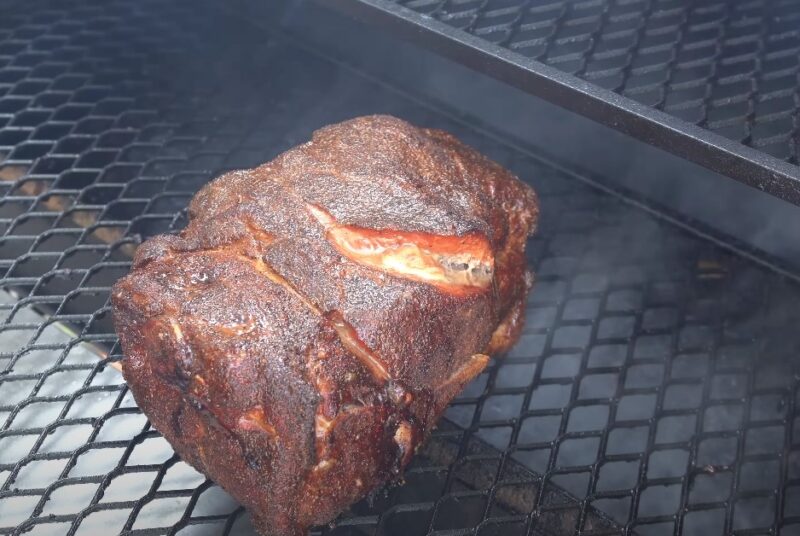Smoking a pork butt is one of my favorite things. There’s so much satisfaction in getting that perfect pull-apart tenderness with just the right amount of smoke. So, when it comes down to it, one of the most common questions I get asked is, “How long do you smoke a pork butt at 225°F?” It’s a great question because low and slow cooking truly comes alive at this temperature.
First things first, I have to say patience is key. Smoking a pork butt at 225°F is not about rushing but giving the meat all the time it needs to break down, become tender, and absorb all those smoky flavors we love.
We’re talking about a process that can take anywhere from 1 to 2 hours per pound of meat. So, if you’re planning a BBQ, remember this is an all-day affair, but the one that’s worth every minute.
So, let’s begin, shall we? I’ll share my experiences, some tips, and maybe a few secrets along the way to help you get an ideal smoke pork butt.
Time Frames
Patience is crucial, and I can’t stress enough about this. The basic rule is that you should smoke pork butt at 225°F for about 1.5 hours per pound.
Of course, this can vary. A 6-pound pork butt, for instance, might require about 9 hours to reach the desired internal temperature of 195°F to 205°F. Different rules apply to different situations, and I’ll walk you through them.
Factors Impacting Cooking Time
Weight is always a ballpark estimate, and various factors can influence cooking time:
- Fat content: Leaner cuts can cook faster than those rich in fat.
- Bone-in vs. Boneless: The presence of a bone can impact heat distribution.
- Ambient Temperature: On cooler days, your smoker might take longer to cook the meat.
How Do You Enhance Flavors?
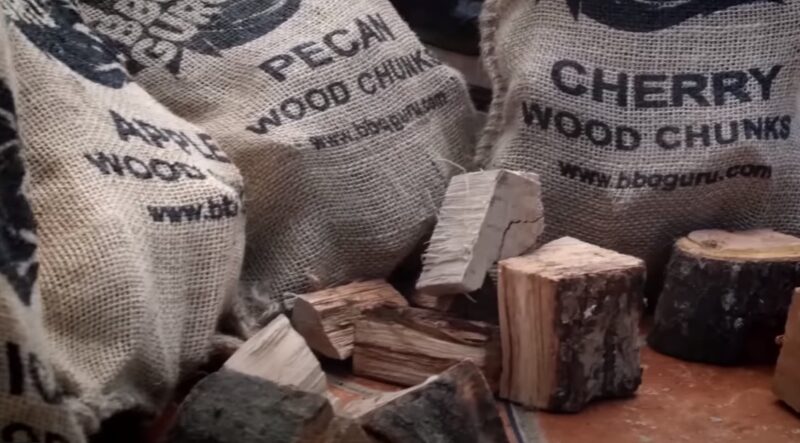
I spend a lot of time choosing proper wood as it is THE THING that will have a huge impact on the final flavor. While hickory and oak are traditional choices, I sometimes go for apple or cherry (typically when I’m going for a sweeter profile).
Marinating and Rubbing
Before you put everything on the smoker, you should take your sweet time seasoning the meat:
- Dry rubs, combining ingredients like brown sugar, paprika, and cayenne pepper.
- I suggest brining or marinating for deeper flavor penetration, but not all marinades are worth it.
- Injections to keep the meat moist throughout the process.
Monitoring and Wrapping
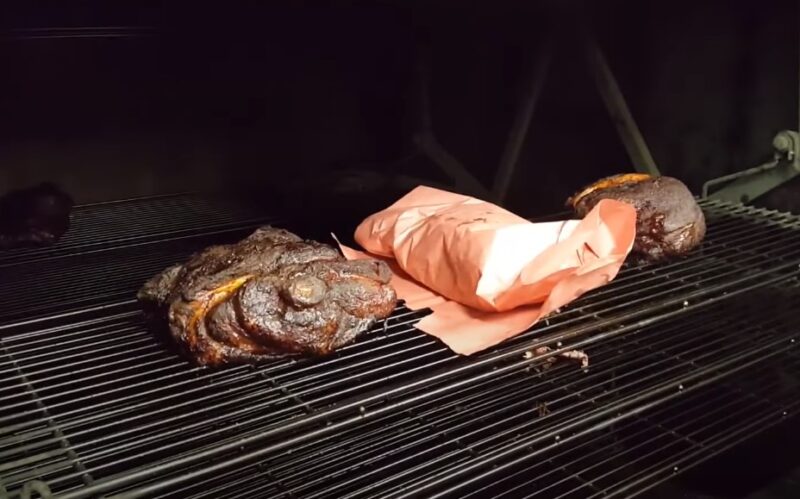
I always monitor the internal temperature. For this, I use a meat thermometer (it’s an excellent tool for gourmets). When the internal temperature hits around 160°F, you might encounter what BBQ aficionados call “the stall.”
The Texas Crutch Technique
To combat the stall and accelerate cooking, this is what you should do:
- Remove the pork butt at 160°F.
- Wrap it tightly in aluminum foil or butcher paper.
- Return it to the smoker until it reaches the desired internal temperature.
Why Resting is Crucial
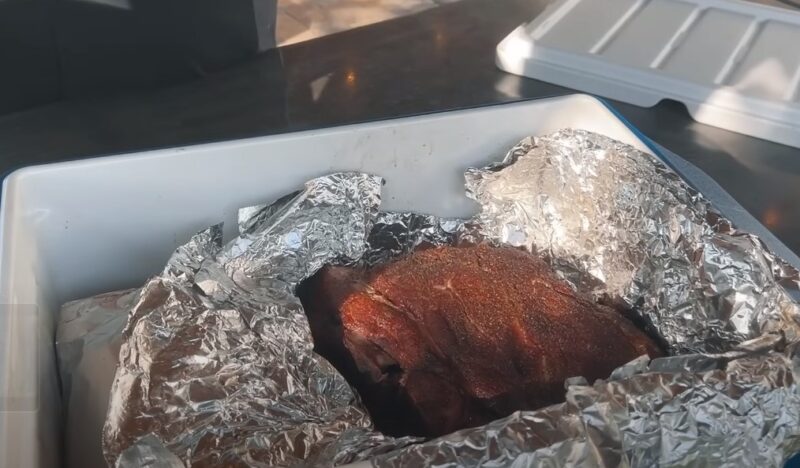
Resting the meat allows the juices, which have been pushed to the surface during cooking, to redistribute. Essentially, this makes every bite as juicy and flavorful as possible.
Don’t skip this step, as it could result in dry and less flavorful meat, regardless of how well it was smoked. Trust me, it’s something I learned from the trial and error process, and not everyone has to go through it.
My Suggestions for Resting
To rest your pork butt:
- Place the smoked pork butt in a cooler or an insulated container.
- Let it rest for at least an hour. Larger cuts might need a longer resting period.
- Keep it wrapped to retain heat and moisture during this period.
Serving Suggestions
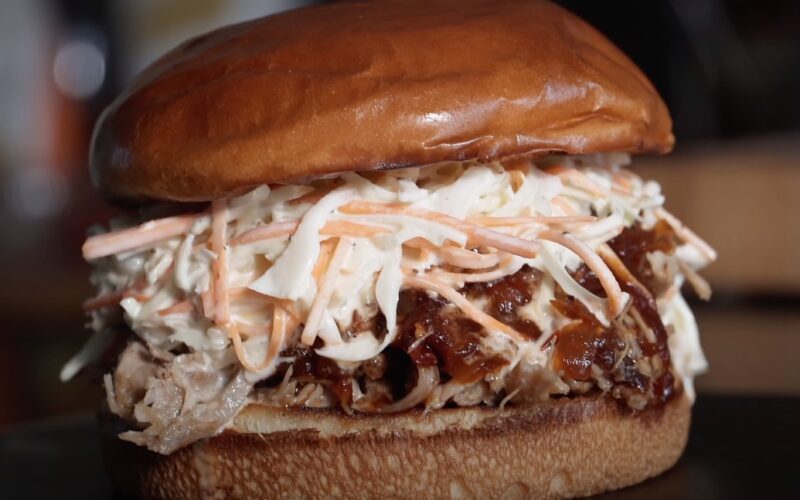
One of my favorite ways to serve smoked pork butt is as pulled pork. Once rested and slightly cooled, shred the meat using two forks. It should pull apart effortlessly, with the tender strands soaking up any sauce or seasoning you wish to add.
You can serve pulled pork in sandwiches, tacos, or even as a standalone dish with sides. Whichever you choose will be awesome, but my personal suggestion is to serve it as a standalone dish with sides to really taste that pork butt the way it was meant to.
My Favorite Complementary Sides
The right side dishes can give your smoked pork butt even more flavor. Here are a few classics I often go for:
- Coleslaw: A tangy and crunchy contrast to the rich, smoky meat.
- Baked beans: A sweet and savory accompaniment.
- Cornbread: The perfect sponge for those delicious meat juices.
Bonus Tip: How to Experiment with Smoke
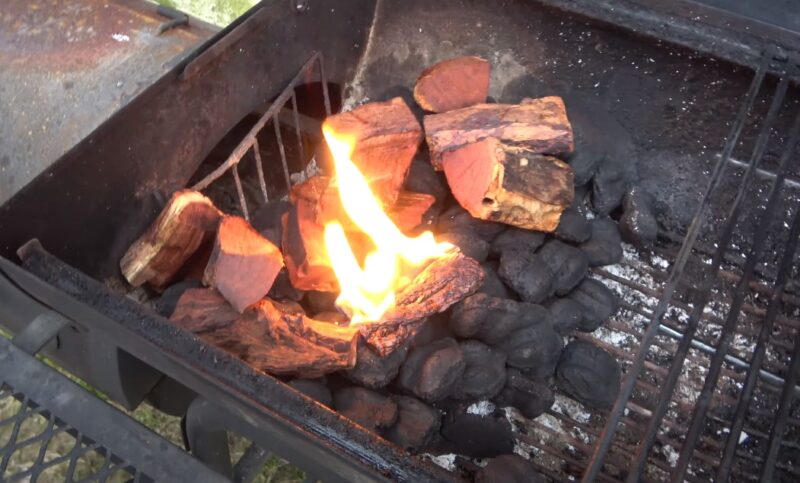
While I’ve already touched on classic choices like hickory or apple, exploring further can be very rewarding:
- Mesquite: Offers an intense, almost spicy smoke. It’s robust, so I often mix it up with milder woods.
- Pecan: Produces a rich and nutty flavor, ideal for those looking for a middle-ground between the intense mesquite and milder fruitwoods.
Add Some Fresh Herbs
Adding fresh herbs to your smoker can add an aromatic layer to the pork. Here’s what you need to do:
- Place sprigs of rosemary or thyme directly on the coals.
- Soak fresh bay leaves in water and scatter them on the coals for a subtle, savory undertone.
Summary
Alright, folks, here’s the deal. After spending a lot of time with my trusty smoker, I can say that smoking a pork butt is laborious but very rewarding. You’re looking at about 1.5 to 2 hours per pound, so for a typical 6-pound pork butt, you’re in for a 9 to 12-hour journey.
But remember, every smoker and every cut of meat is different, so keep an eye on that internal temp. You’re aiming for that sweet spot of 195 to 205 degrees. Patience is key, so save some time when you decide to prepare this delicious dish.
I’m Jamie. On my blog, you’ll find BBQ recipes and cooking tips to help you make great food at home. Stick around for simple steps and secret ingredients that will help you enjoy grilling delicious food all the time.

